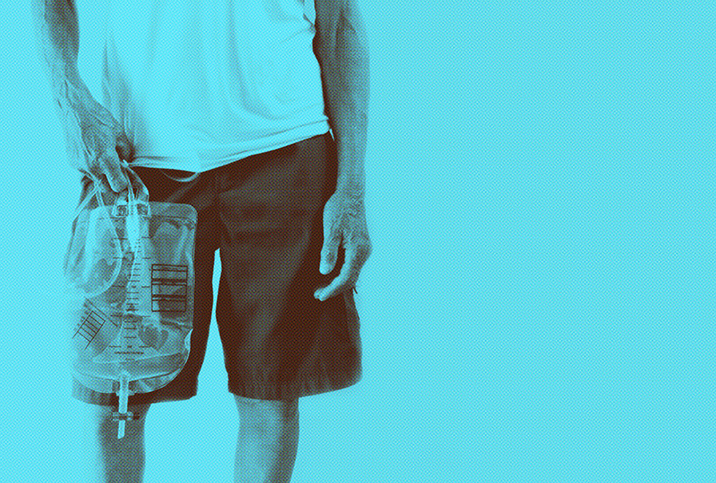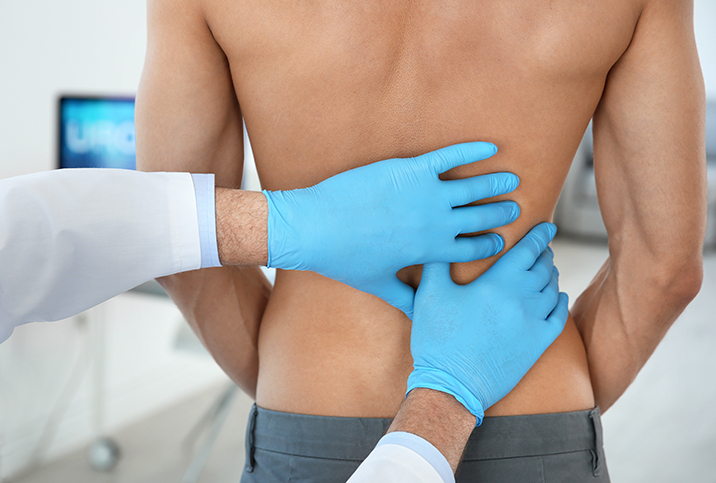Take a Walk for Prostate Care and Prostatitis Management

Most men probably give little thought to their prostate gland or pelvic floor. They may be aware of prostatitis and other prostate conditions, but likely don't consider prostate health during their weekly routine. Maybe they should.
A 2006 study claimed that light aerobics can benefit people at risk of or living with conditions such as chronic prostatitis. If aerobics help people with prostate conditions, is it also true that prostate health can benefit directly from moderate exercise?
The answer is yes, but it's important to think about this more in the context of everyday health-based activities rather than as a remedial option to pursue after prostate pain starts.
Moderate exercise improves overall health
"Studies have focused on people who have low activity levels versus people who are more active," said Wael Almajed, M.D., a urologist working on research for Tulane University in New Orleans. "People who are less active or have sedentary lifestyles do experience more significant symptoms from benign prostatic hypertrophy [and other prostate conditions]."
There is a close relationship between the prostate, the pelvic floor and the urinary tract. These systems are interconnected and, in some ways, interdependent on one another. Most people are at least peripherally aware of their urinary tract throughout life, since they have to urinate regularly, but the pelvic floor and prostate gland tend to get less attention until later in life or when men begin to experience problems.
There is a close relationship between the prostate, the pelvic floor and the urinary tract.
Some of the issues men experience in these categories can be mitigated with a proactive focus on a manageable amount of exercise.
Almajed said men with sedentary lifestyles tend to develop more problems with the pelvic floor and urinary tract later in life or when acute issues begin to manifest or become chronic. Men who have fallen into these habits tend to be more recognizable from a clinical standpoint because they have lower urinary tract symptoms (LUTS) that tend to be more severe, he said.
Part of the reason exercise helps is because it can benefit and improve the health of the pelvic floor muscles.
Pelvic importance
"People who are more active have better pelvic muscle strength, so there's also some association that [exercise] improves chronic pelvic pain, for example, and chronic prostatitis, so that's also a factor," Almajed said.
Pelvic floor exercises are noted for benefiting the health of the pelvic muscles and possibly creating benefits for other aspects of the body.
Before you bookmark pelvic floor exercise videos and instructional articles, you might want to consult your primary care doctor, urologist or another specialist. When preexisting conditions are a factor and remain unidentified, it's possible that doing pelvic floor exercises may exacerbate symptoms and actually forestall the healing process. These exercises can have benefits, but if you do them and notice symptoms worsening, you should stop doing them right away.
If you are looking for regular exercise you can safely do to improve prostate and general health, light aerobic exercise, such as walking, is a pretty safe bet. Even patients with cancer, including prostate cancer, can benefit from light exercise.
Alleviation of prostate cancer symptoms
"We know that there are overall benefits to moderate exercise. Just like it will improve overall health, decrease overall inflammatory response to the body and that sort of thing, the same thing holds true when it comes to prostate health," said Matthew Mutter, M.D., a New Orleans–area urologist affiliated with LSU Health.
In its most basic definition, prostatitis is essentially just shorthand for prostate inflammation. So it makes sense that frequent low-impact exercise might reduce the impact of prostatitis on patients.
But it might surprise people to find out that light aerobics can benefit men experiencing the prostate's other notorious condition: cancer.
The recurring message is clear: Better general health equals better prostate health, or at least less severe symptoms.
"If you have a man with prostate cancer, daily exercise is good for a host of things," Mutter said. "It helps improve stamina and tolerability of any kind of treatment you may undergo by having an improvement on your overall health."
The recurring message is clear: Better general health equals better prostate health, or at least less severe symptoms. But it's a fool's errand to say walking a few times a week will prevent diagnosis of cancer or treat it.
"Does it directly treat prostate cancer? No, we're not going to say walking every day will magically treat your prostate cancer," Mutter said. "But what it will do is dramatically improve your ability to tolerate any kind of treatments that may come from prostate cancer."
So...should I take a walk?
You shouldn't be under any misconception that light aerobics, even performed at a high level of discipline in your youth or later years, will guarantee a healthy prostate throughout your life.
Prostatitis is a condition that develops for many reasons, including factors related to genetics, injury history, overall medical history or simply bacterial exposure. While the potential benefits of walking to decrease the severity of prostate symptoms are very real, they should be viewed as potential rather than a guarantee, especially when other health issues become a factor.
"When it comes to the question of whether increasing activity would prevent those symptoms from happening, it's less clear," Almajed said. "But the evidence suggests that people who are less active are more likely to experience more significant symptoms when it comes to urination, emptying of the bladder, urgency and so on."
Many prostate conditions, including prostatitis, are notable for how their progression or symptomatology manifests in relation to the urinary tract and urinary functions of men. With this in mind, men of all ages should take some time to think about their prostate, pelvic floor muscles and urinary tract as a function of weekly exercise.


















